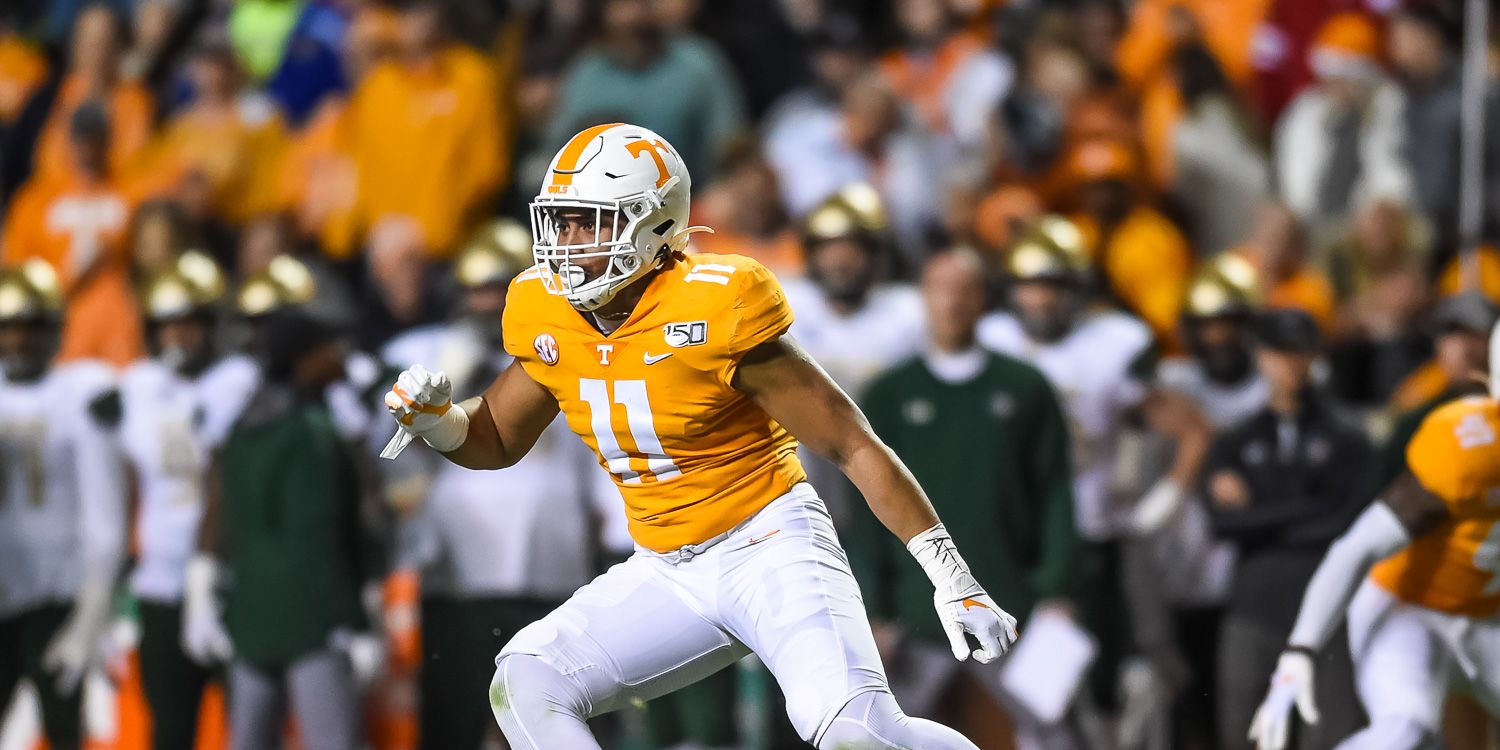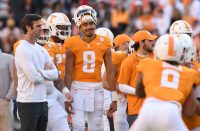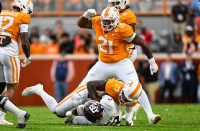As discussed last week, Tennessee’s 9th ranked recruiting class (per Rivals) was not only strong in its own right but also served to both widen the gap between the Vols and programs below them in the SEC East and also at worst maintain the status quo between them and Georgia and especially Florida. That said, there is a narrative that serves to discount the meaningfulness of Tennessee’s ranking that misses a number of important points. That story is that because Tennessee’s class is “only” 7th in the SEC (behind Alabama, LSU, Georgia, Texas A&M, Florida, and Auburn) that means the Vols are stuck in mediocrity within the SEC and even nationally, which is not only false but shortsighted. To wit:
Point I: Before one can get to comparing Tennessee’s class to anyone else’s in the conference, it simply must be reiterated that Coach Jeremy Pruitt had a monumental task of roster building when he took the job in December 2017. The talent level across the board was way down (as evidenced by Tennessee having ZERO draftees in the 2019 NFL draft) as were the overall numbers relative to the 85-man scholarship limit. So simply following up last year’s #12 class in 247 Sports’ enrolled rankings (which Rivals does not have, thus the change of recruiting service) with a Top 10 nationally ranked class is a huge deal. Pruitt needs to keep stacking up these types of classes – filled with difference makers at multiple positions and very few if any reaches – in order to build Tennessee back into a true title contender. And then of course continue to develop that talent like he has so far. And this was a step no matter how many other SEC schools are also in the Top 10
Point II: Florida, Tennessee’s arch nemesis, also had a strong class. Using the same Rivals rankings, the Gators’ 24-man class finished 7th in the country with one 5-star and thirteen 4-stars and an average star ranking of 3.58, while Tennessee’s 23-man class finished 9th overall with zero 5-stars (pending QB Harrison Bailey’s deserved 5th) and thirteen 4-stars and an average star ranking of 3.52. The classes are almost exactly equal to each other using these objective metrics, effectively meaning that the idea that Tennessee finished “behind” Florida is while technically true in reality meaningless. Further, when comparing Pruitt’s two whole classes to Gators Coach Dan Mullen’s, Tennessee has two more players on its roster from the 2019 class than does Florida, who lost its top-rated 2019 signee and three 4-stars before the 2019 season began. One could very easily make the case that between the two classes Tennessee has more talent on its 2020 roster than do the Gators
Two-year average ranking (2019 enrolled, 2020 Early Signing Day)
Tennessee: #10.5 average rank (#12 + #9)
2019:22 signed, 2 out – Melvin McBride and Jerrod Means, 2 transfers in (Aubrey Solomon and Deangelo Gibss, with one and two more seasons of eligibility remaining, respectively); 22 net for 2020 season
Florida: #12 average rank (#17+#7)
2019: 24 signed, 3 never enrolled, 2 transferred out before the season (including its one 5-star as well as three 4-stars), 2 transfers in (Jon Greenard, now out of eligibility, and Brenton Cox, 2 years to play); 20 net for the 2020 season
Point III: Tennessee doesn’t play Texas A&M, Auburn, or LSU except for once every eight years unless it meets one of them in the SEC Championship Game. So being behind those schools in terms of recruiting ranking is effectively akin to being behind Clemson or Ohio State – if you’re seeing one those schools on the field it very likely means you’ve had an incredible season and your program has accumulated enough talent and developed that talent well enough that a single year’s recruiting ranking variance is fairly meaningless.
Point IV: Following Point III, Tennessee’s top three competitors in the SEC East – Georgia, Florida, and to a much lesser extent South Carolina, actually DO play Auburn, LSU, and Texas A&M, respectively every season. Therefore, those programs gobbling up talent is actually a good thing for Tennessee as it makes it more likely that they deal UT’s East rivals a loss.
Point V: Tennessee’s class would have ranked #2 in the Big 10, #2 in the ACC, and #1 in both the Big 12 and Pac10. Does that matter, when Tennessee isn’t in those conferences? Well, the SEC got one team in the College Football Playoff (a step down from the two the conference has gotten in the recent past) and two teams in NY6 bowls. Alabama, long the king of college football and the SEC, is not one of these three teams but is still playing in the highly acclaimed Citrus Bowl at 10-2 and Auburn at 9-3is in the Outback Bowl. Point being,
Point VI: Further to Point V, compare Tennessee’s #9 class with that of its next four Power Five nonconference opponents and decide for yourself if that ranking will matter for the Vols:
2020 (probably too soon for the 2020 class to really matter): Oklahoma #12
2021 Pittsburgh #47
2022 Pittsburgh #47
2023 BYU #82
So while Tennessee could conceivably move up in the final rankings if it manages to close out with some of its targets – namely Auburn commitment DL Jay Hardy and Jumbo ATH Dee Beckwith – the 2020 class is already one that has added substantially more talent and depth to the program. And regardless of who sits in the eight spots in front, that’s a meaningful win for the Vols program.





Nice work Dylan. It’s been awhile since I’ve checked in here at GDR. I was seeking an article with depth, something other than a quick sound bite. You certainly sated that thirst. Thank you!